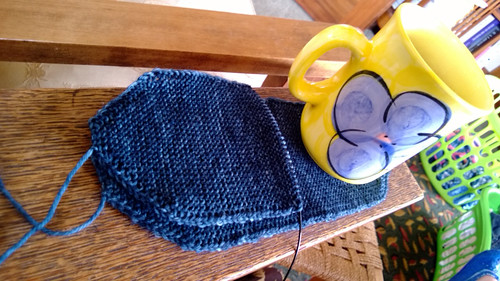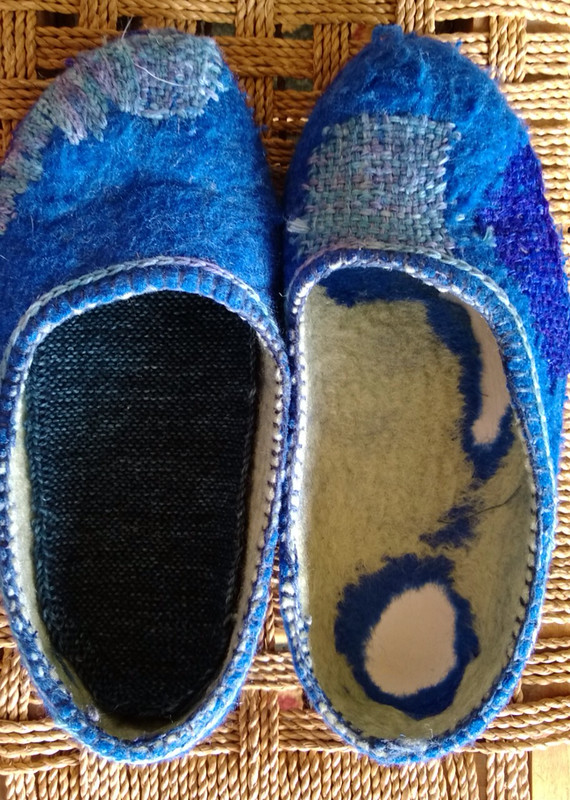So over the last few years I have become more and more interested in repair as a practice, and I have to say I am becoming more comfortable about repairing and been seen to repair. I grew up in the 1960’s and 1970’s in New Zealand, where for political and economical reasons there was a pretty much a closed economy. You could buy anything, as long as it was made in New Zealand, or that possibly could be made in New Zealand. That meant that when the rest of the developed world had tv, we were waiting for someone to make the components and then make the tv ...cause technically tv's could be made here ( even if they weren't). The same kind of logic applied to all sorts of other things, electronics, cars, toys, shoes, carpets ... pretty much everything one wanted and saw in the media that those overseas had. I know now the media painted a rosey and unrealistic image of a world of plenty - but then I didn't know that. And this was post World War Two, and economically and culturally New Zealand aligned with England, who had a rather slow economic recovery from the war. My parents were children of the war, so their experience was pretty much the stuff you had was the stuff you could afford, and the stuff you could make. My dad was a mechanic, so fixing things was what he did at work, and at home, our house was a fixer-upper, our car old and repaired, and then repaired again, both the motor and the body. My mum sewed, and when we grew the clothes were altered and let out, always in such a way the adjustment was concealed. When the electric kettle died a new element was bought, when a heater, lamp, or radio stopped working a repair was made, either by dad or he took it to a repair shop. My childhood radio was 1960’s white plastic, with valves, two white knobs and one unmatched 1970’s black knob as that as what the repairer had to hand.
None of that bothered me, that was how we lived. Fixing stuff was just what was done. What did bother me as when china broke, plates or cups, and they were glued together, and continued to be used. I have to admit that was my grandmother not my parents. There was something uncomfortable about a visable repair, a patch, a line of yellow glue oozing out of a mend, a criss-cross of sticky tape across a rip or torn cover or page. What bothered me more was when the repair decayed, the glue yellowed, the sticky tape came unstuck, and the item was worse than before. So recently my hand felted slippers started to wear, and life was busy, too busy to make another pair, but the more I wore them the larger the holes got. I still live in New Zealand but the economic and political climate is very different, I could have stopped and bought any number of replacement slippers ... cheap, mass produced and on the whole ugly. I could have searched out more expensive slippers ... Lambskin lined with soles, but it loved the idea and the feel of my hand felted ones. Then a few days ago I gave in, and darned an hole closed,
It looked good, I used sock yarn and liked the effect, so I added a darn to the instep, where another hole was forming.
And the. I decided that I would try chain stitch over the darn, and I liked the effect, the darn looked like knitting. I added a band of chain stitch around the top edge and another around the edge of the sole. I began to see that this kind of repair could be ok, not ugly and very much not making do.
Ther was just one problem, the inside was as worn as the outside, maybe more so. The only thing that stopped the holes in the felt was a layer of leather, the sole. I knew that stitching over those holes wouldn't be as easy, they were inside and I'd feel any lumps and bumps.
Enter my knitting library, and a book I've had for ages. Icelandic knitting using rose patterns by Hélène Magnùsson. This book explores the garter stitch colour work found in shoe-rags or inner soles and applies the designs to outerwear. I was a little surprised not to find a shoe-rag pattern in the book, but there were heaps and heaps of clear photos of historical examples. After a few false starts where I overthought the process and tried to make anatomically correct innersoles with left and right toe shaping and a narrower heel than the ball of the foot I gave in and knit some as pictured. And these work, surprisingly fantastically so.
Somehow the pointy garter oblong fits into a slipper and moulds itself to fit, garter stitch is magic - beginner knitters don't appreciate how forgiving it is. The innersole adjusts to the shape of the slipper with no wrinkles or bumps. I'm already halfway through the second one ...
Pattern to follow, if there is interest, for those who like warm feet, have worn out slippers and like me are coming to terms with repairing things that take so long and so much knowledge and effort that replacing them isn't an easy option.
Na Stella





4 comments:
Yes, pattern please! I too have been patching and repairing our felted slippers these last few months. The children seem to be wearing out the fronts and the heels before they have grown out of them.
Yes indeedy, pattern please! Those shoe rags (correct term?) could've saved a pair of leather slippers I'd been wearing for...ages! Those photos of the darned slippers remind me of brocaded slippers: now I know why they made them that way, besides the aesthetics of the technique.
The patches look lovely, you did a great job. I'd also like to know what pattern you used for the slippers, they look very comfortable.
Googling and finding felt slipper mending ideas like this is magic! Thanks for great ideas
Post a Comment